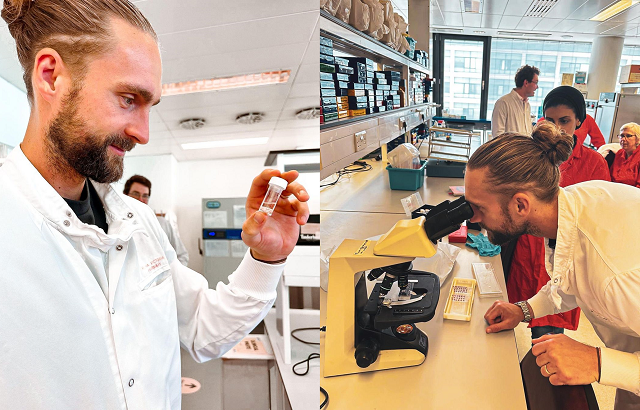


“I had been scanned at 16 years old whilst a young player at Brentford FC, and the scan indicated I had an irregular heartbeat,” Fraser reflects.
“On further investigation it found that I was born with a bicuspid aortic valve. I felt no symptoms so never thought to go for further scans. I was worried that my career could be over before it had even really begun. At 28, I contracted an infection around the heart that would eventually lead to my retirement.”
Living with a faulty heart valve
At the entrance and exit of each of the four chambers of the heart are valves, which open and close quickly between heartbeats to stop blood flowing backwards. If the heart valves are faulty – if they don’t open properly or are leaky – they place a strain on the heart.The aortic valve is found at the exit of the heart through which blood is pumped around the body. Abnormalities in this valve affect around one per cent of people. The commonest abnormality, bicuspid aortic valve, can be present in newborn babies but often doesn’t cause problems until middle age.
Defects can also run in families, and researchers think they are caused by variations in genes (segments of DNA) involved in the valve’s development in the womb. However, we don’t yet fully understand how the aortic valve forms and so cannot be sure if these changes in the genes are truly responsible for the faulty valve.
How are ‘normal’ aortic valves formed?
BHF-funded researcher Professor Deborah Henderson and her team at the University of Newcastle are looking to find out how ‘normal’ aortic valves are formed in mice and zebrafish. They will then see how mutations (faults in the DNA) similar to those seen in people with a bicuspid aortic valve disrupt these processes and result in changes in the aortic valve.This could help identify which of the suspected genes are truly important, and so help doctors to predict possible outcomes in their patients – people like Fraser.
Raising awareness for hidden heart conditions
Fraser visited Professor Henderson’s lab to see this research happening firsthand.“It was an incredible honour to be invited up to Newcastle with the BHF to meet the most amazing research team working on the causes of aortic bicuspid valves,” Fraser says. “I’ve never met so many intelligent people in all my life. It is absolutely mind blowing what they are doing.”
Fraser has teamed up with the BHF for our Spotlight On campaign, which aims to shine a spotlight on hidden heart conditions.
“I have no idea why I was born with this condition, or why it has progressed the way it has. I will be having a mechanical valve fitted soon, but all I want to do in the meantime is raise awareness for hidden heart conditions and help as many people as I can.”


